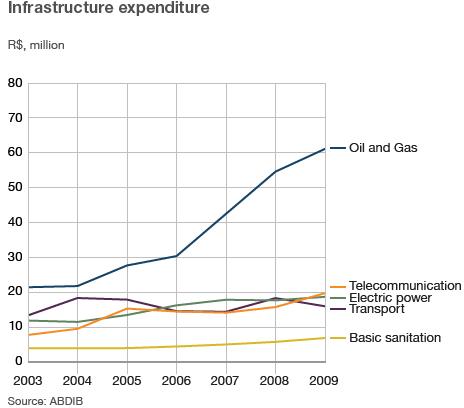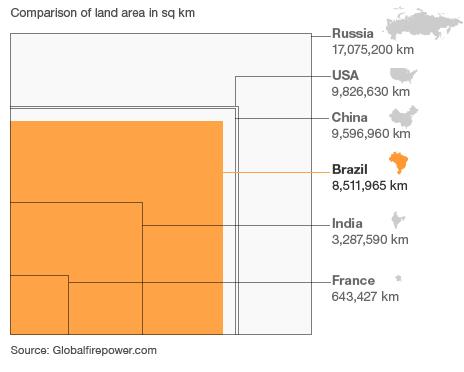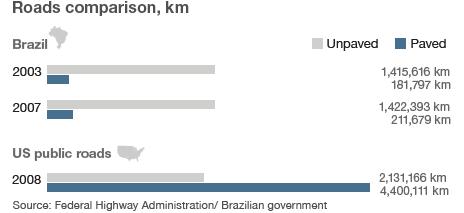Brazilian elections: Infrastructure
- Published
Brazil's size and varied terrain pose a major challenge for creating the cohesive infrastructure necessary to support its emerging economy.
Under President Luiz Inacio Lula da Silva, investing in infrastructure has been at the heart of what was known as the growth acceleration programme (PAC) launched in 2007.
A further $500bn is earmarked for investment over the next five years.

There has been some improvement in logistics but the the Latin American Business Chronicle reports that freight depends on costly road haulage, there are few railroads, the use of waterways remains largely unexplored, and ports and airports are congested.
The huge distances to cross the country are an issue for individuals as well as commercial concerns.

From Manaus, in the Amazon region, to Natal on the east coast is 2,777km as the crow flies, but 5,985km by road - the same as driving from New York to San Franciso and then down to Phoenix. That is why most people, if possible, would opt for the quickest route: 6 hrs 30 mins by plane. Another option is three days by boat from Manaus to Belem, then 35 hours by bus on to Natal.
And the roads are not always in the best condition - with thousands of kilometres of unpaved roads as development spreads into cleared areas.

The major cities in the south are a better connected but it still takes 17 hours by bus from Rio de Janeiro to the capital Brasilia.
Those who can afford it, therefore, fly. In 2009 Sao Paulo's Guarulhos airport handled 21m passengers - almost the same as New York's JFK.
Air travel has been growing at a rate of 10% a year but experts say an upgrade in the country's main airports is long overdue.